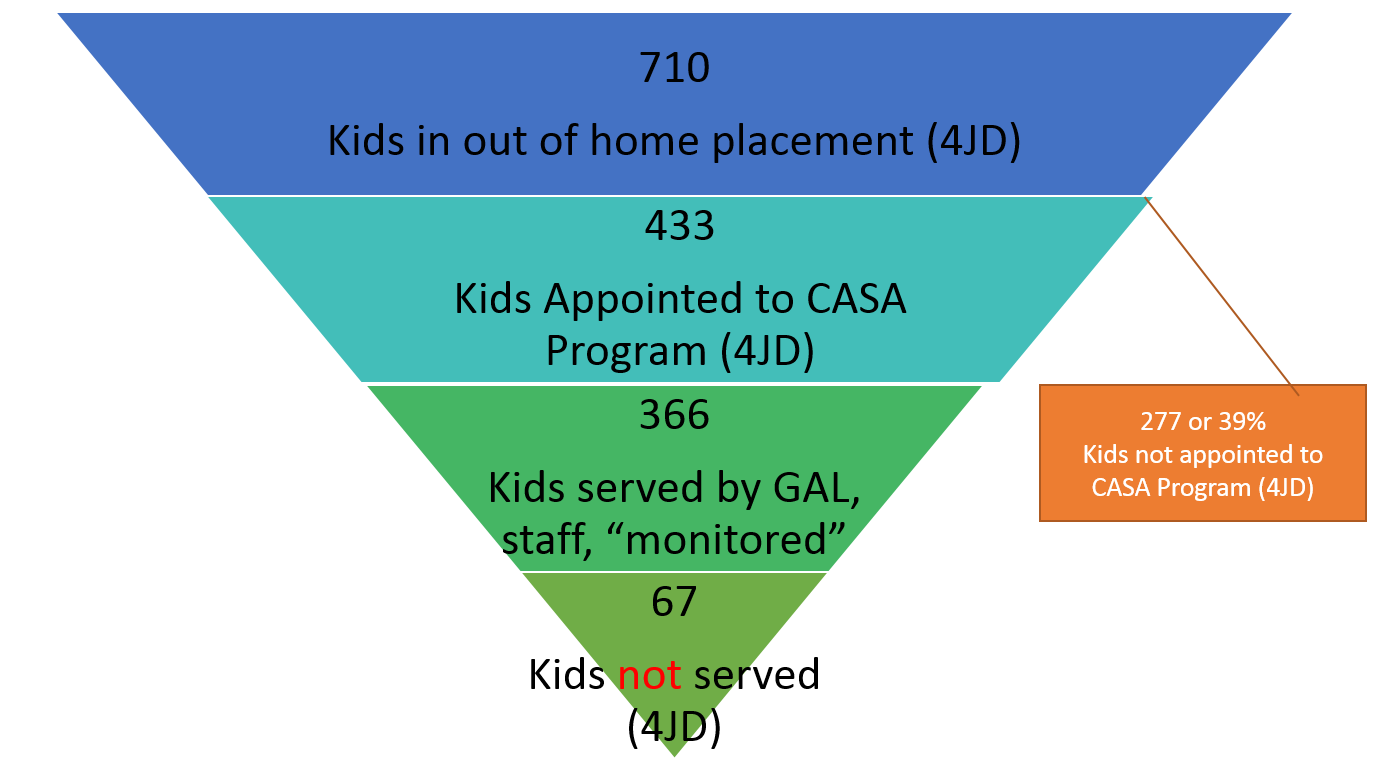
Child Abuse Awareness
April was first declared Child Abuse Prevention Month by presidential proclamation in 1983. Since then, April has been a time to acknowledge the importance of families and communities working together to prevent child abuse. The team at Family Advocates gets asked a lot about who the families are that are involved in the child protection system and there are many stereotypes about how children come into care. Let’s start with the numbers.
Last fiscal year, there were 710 children placed in out-of-home living situations in the four counties Family Advocates serves (Ada, Elmore, Valley, and Boise Counties). Of those 710 children, Family Advocates was notified of 433 and were able to find both a volunteer Guardian ad Litem as well as a pro-bono attorney for 366. In Ada County, CASA is required to find both of these volunteers in order to sign into a case. That left 67 children that our program was notified of that we didn’t have enough volunteers for. It also means that 277 children did not receive a Guardian ad Litem. That is a lot of children. Below is a graph that shows the breakdown;

But who are these families? While there are many assumptions about the parents and the families, we want the community to know that there is not two cases alike. All of these families, and the children within, are living in their uniqueness. It happens across socio-economic status, religion, race, ethnicity, genders, and more. This uniqueness is the reason why everyone in the community should care. These are children that sit next to your kids and grandkids in the classroom. These are the children that live in your neighborhood, just down the block. These are the children that you will hire or work alongside for the rest of your lives. And wouldn’t you want these future citizens to have the best possible future? If you can help a child who is suffering out, that can mean the world and more to them. An outside family member may come to you or onto places like this Peters And May site, to ask for help in removing the child from abusive custody, helping them provides them with a better chance at life.

